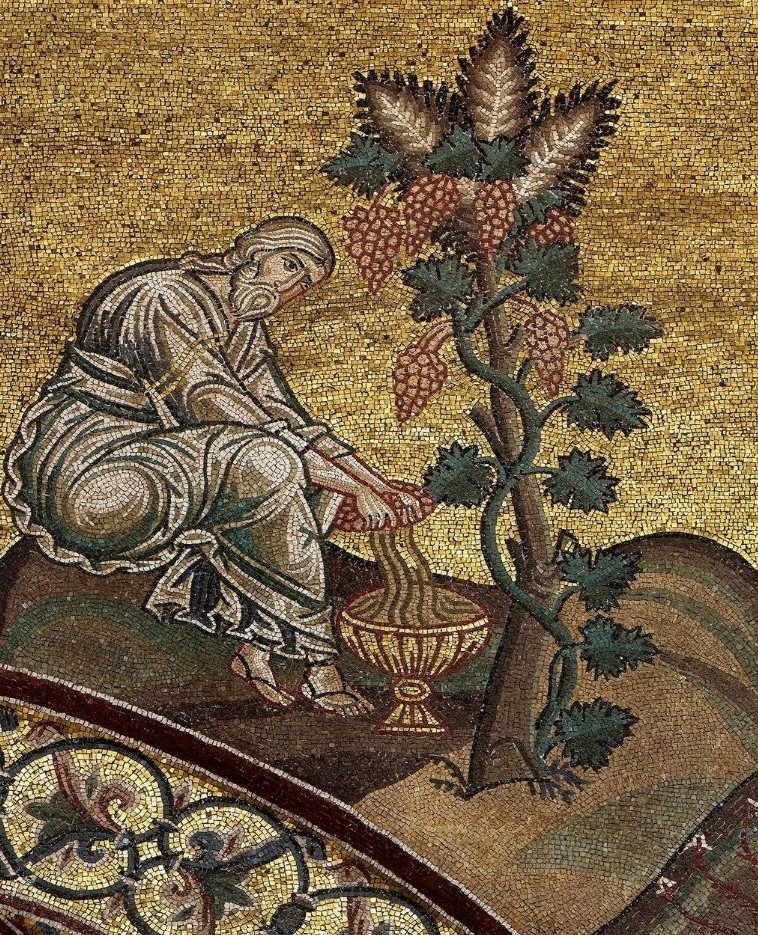Wine in the Christian Orthodox Religion
During the spread and flourishing of Christianity in Greek-Roman civilization, wine had already been a staple foodstuff. Therefore, it did not take a long time for the Christian religion to accept it and treat it as a blessed commodity.
It is noteworthy that the words ‘wine’ and ‘vineyard’ are frequently used as examples in the Evangelical parables and there are many references to them in the Holy Scripture.
The symbolism of wine during the cementation of Christianity
In the Old Testament
As we know from the writings in the Old Testament, wine acquired distinctive symbolism. After the flood, Noah planted and managed to create his own vineyard. In Exodus, God gave a promise to bless three significant goods for human life: bread, water and wine.

The lands and climate in the regions of Hebron and Palestine were conducive for the cultivation of vineyards. Viticulture flourished in a short time and gained great demand, as people cultivated their vines to produce the blessed wine.
David hymns wine through his psalms, saying: "And wine that makes glad the heart of man..." (Psalm 104:15) and "You have put gladness in my heart, More than in the season that their grain and wine increased" (Psalm 4:7).
Essentially, David believes that wine delights the heart, which is one of the most vital organs of the human body and the center of human emotions.
In the New Testament
In the New Testament, it also becomes clear that wine acquires a sacred significance through various events.
Jesus Christ starts his numerous miracles at the wedding in Cana, where He transforms water into wine.
Later, in the Last Supper, our Lord gave a cup of wine to His disciples, saying: "For this is My blood of the new covenant, which is shed for many for the remission of sins" (Matthew 26:28).
![]()
With this mention of our Lord, it was established to offer bread and wine in the Sacrament of the Holy Eucharist, symbolizing the body and blood of Jesus Christ. Here you can find icons of the Last Supper.
Read here: Wines of Mount Athos: the Secret behind Monastery Wine...since the 10th century!
Nama, the wine of the Holy Eucharist
‘Nama’ or ‘Anama’ is the wine that is used in the Sacrament of the Holy Eucharist and is prepared through a special process.
For approximately 48 hours, the grape must boils slowly until it is concentrated. For every 600 kilograms of grape must, a bucket of already condensed stum is added to initiate fermentation once again.
Throughout this entire process of preparing the Nama wine, great care is recommended, as the stum can turn sour.
The presence of wine in sepulchral customs
It is worth mentioning that in sepulchral customs that are preserved even today, the presence of wine is necessary.
During the sacrament of burial, the priest prays, pouring some wine on the grave of the departed. In addition, during the exhumation, the bones are washed with wine.
In the past, in some areas, relatives washed the warm body of the deceased with wine or vinegar.
In certain regions in Greece, at the memorial services, the relatives bring, along with koliva, wine or stafylarmia (in Greek σταφυλαρμιά) that is grapes in petimezi (i.e. concentrated stum). Read here: Koliva: the symbolism of the ingredients and how we decorate them.
Saint Tryphon, Patron Saint of Viticulture
During the pruning season, all monasteries that have vineyards, as well as the rural population outside the walls of monasteries, pray for a good harvest, to the Patron Saint of Viticulture and agriculture, Saint Tryphon.

Here you can find icons with Saint Tryphon.
Source: "Athos and Wine" by Eleni Kefalopoulou, with contributions from Aris Fotiadis.



















